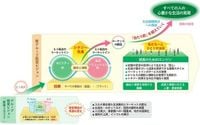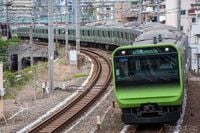On May 8, 2025, JR East announced a significant reorganization of its business structure, aiming to enhance its operational efficiency and adapt to changing market conditions. This restructuring, set to take effect on July 1, 2026, will replace the current system of two headquarters and ten branches with a new framework consisting of 36 business headquarters.
The decision to overhaul the existing organizational structure stems from the need to move beyond the outdated divisions that were established during the Japan National Railways (JNR) era. JR East plans to eliminate the three-layer structure of 'frontline workplaces,' 'headquarters/branches,' and 'head office,' transitioning instead to a simplified two-layer system comprising only business headquarters and the head office. This transformation is designed to better reflect regional market conditions and customer usage patterns.
Under the new operational framework, each of the 36 business headquarters will function as a regional management unit. They will focus on improving daily railway operations, enhancing service quality, and addressing local issues. The head office will be functionally divided into two departments: a Group Strategy Department responsible for overarching business strategies and a Business Execution Department that will oversee daily operations.
JR East's leadership emphasized that this restructuring aims to foster quicker decision-making and a more responsive service provision. The company's new approach also includes a review of work styles, moving away from the traditional distinctions between field and non-field roles. This shift is intended to empower employees to take initiative and actively engage in their respective roles.
Safety remains a top priority for JR East. The Group Strategy Department will oversee the development of long-term safety strategies, while the business headquarters will implement daily safety measures in collaboration with the head office. In the event of emergencies, such as natural disasters, the business headquarters will coordinate with one another to ensure prompt and effective responses.
Additionally, JR East is set to revise its personnel and compensation system, which will take effect on April 1, 2026. These changes are designed to motivate employees by aligning salary increases with individual performance, growth, and contributions. The company plans to raise initial salaries and increase the mandatory retirement age from 60 to 65. JR East has stated that 'livelihood income will increase for all employees,' with personnel expenses expected to rise by approximately 100 billion yen over the next decade.
Regular salary increases, which currently occur every April based on job title, will be adjusted to reflect employees' achievements and efforts. New allowances for irregular work will be introduced, and the company will also revise childcare support allowances to better accommodate employees' needs.
JR East's commitment to fostering a diverse work environment is evident in its plans to establish new roles, such as technical leaders and frontier staff, to support various career development paths. The company aims to promote personnel exchanges across group companies, further enhancing employee engagement and collaboration.
The upcoming changes are part of JR East's broader strategy to create a robust management structure that supports mobility and lifestyle solutions centered around railways. The new group management vision, which will replace the previous 'Innovation 2027' framework, is expected to be announced in the summer of 2025.
By embracing these transformations, JR East seeks to enhance its operational agility, improve service quality, and better meet the expectations of customers and local communities. The company is determined to pioneer a 'new era' for the JR East Group, with a focus on delivering 'peace of mind' and 'excitement' to its customers.
As the company prepares for these significant changes, it is clear that JR East is committed to adapting to the evolving landscape of the railway industry while prioritizing safety, quality, and employee engagement.






